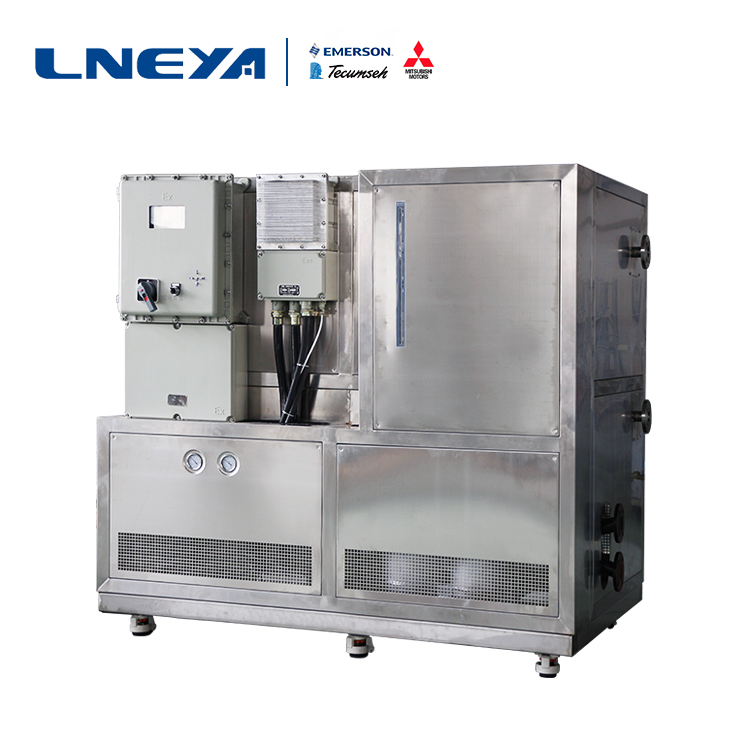TCU温度制御システムの原理
Use area: can be used in various explosion-proof areas
The temperature control unit (TCU) is mainly used in reactor heating, cooling temperature control in fine chemical, chemical pharmaceutical, and biopharmaceutical processes. It can realize automatic control of temperature rise, temperature drop, constant temperature and distillation during the reaction process, especially suitable for the reaction process. There is a process control that requires heat and heat.
When the TCU 温度制御ユニット is in high-efficiency operation, it must pay attention to timely protection and maintenance. If the equipment is actively handled under the condition that the equipment is subject to defects, the service life of the equipment will become longer.
Users can get a closed and repeatable temperature control over a wide temperature range, temperature control from -120 to 300 °C; avoid the need for replacement of traditional equipment and jacket maintenance; smaller fluid volume is also guaranteed The control loop reacts quickly and the thermal reaction delay is small. Built-in electric heating and heat conduction and auxiliary system, can be automatically opened according to demand, reducing steam pressure. The device has a standardized interface, which can increase the heat source heat exchange module according to actual needs.
The TCU device opens the angle of the electric regulating valve according to the instruction given by the system PLC, and controls the flow rate of the low temperature liquid into the reaction jacket jacket, thereby achieving energy saving and high efficiency. All signals fed back by this process are based on temperature.

LNEYA’s TCU temperature control system principle:
1. The method of changing the control set value can respond to the system lag in the process as soon as possible, and get a small system overshoot. Control consists of two sets of PIDs (each group of PIDs are variable) control loops;
2. A specially designed lag predictor (no model self-built tree algorithm) generates a dynamic signal yc(t) instead of the process variable y(t) as a feedback signal. Generating an e(t) signal to the controller to cause the controller to predict that the control action has no large hysteresis, so that the controller can always generate a suitable control signal;
3. Through three-point sampling (material temperature point, temperature control system outlet temperature, temperature control system inlet temperature), through our company’s own model-free self-built tree algorithm and general anti-lag cascade algorithm.
関連推奨品
-
集積回路チップ試験温度制御用温度制御システム
1067半導体技術の進歩により、集積回路のような次世代の電子デバイスが開発され、より多くの能動部品、より複雑な回路、より小さな面積、よりタイトな配線が実現されている。このような集積回路を構成する部品は...
詳細を見る -
Electric Vehicle Motor Test Cooling System Chiller Instructions
1317With the continuous development of new energy vehicles, Chiller, the electric motor motor test cooling system, is also developing. The new chiller for motor testing of new energy vehicles can adaptively adjust the chiller according to the dynamic ...
詳細を見る -
超低温フリーザーについて知っておくべきこと
823Ultra low temperature freezer is an indispensable cryogenic storage equipment in the field of life sciences and biopharmaceuticals. It can be used to store cells, tissues, test samples, vaccines, active enzymes, strains, plasmids, viruses, bacteri...
詳細を見る -
Application area of high temperature refrigeration and cooling control system
871The high-temperature refrigeration and cooling control system is used for supporting glass reactors, rotary evaporators, fermentation tanks, and calorimeters; widely used in petroleum, chemical, metallurgical, biochemical, physics, testing and che...
詳細を見る
 LNEYA工業用冷凍機 メーカー サプライヤー
LNEYA工業用冷凍機 メーカー サプライヤー













